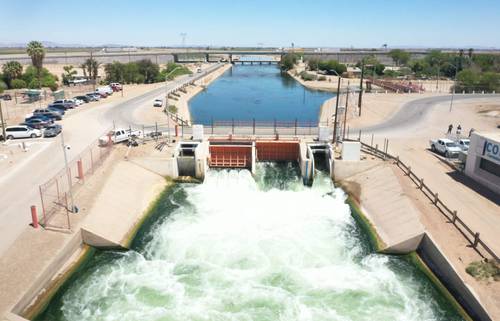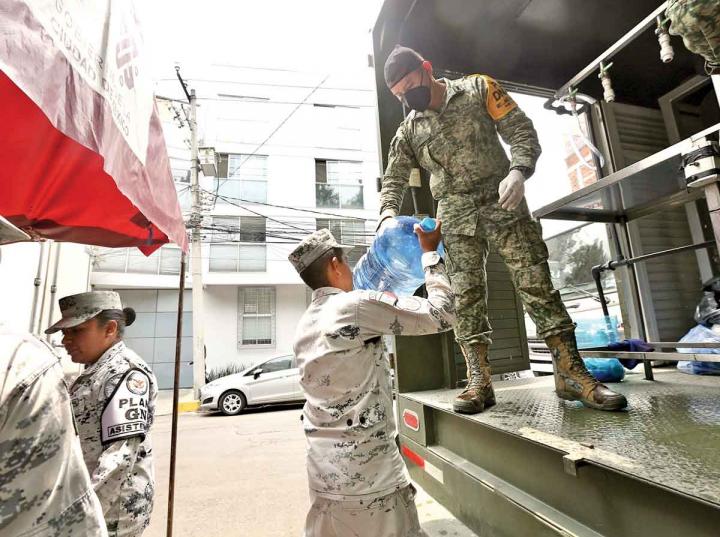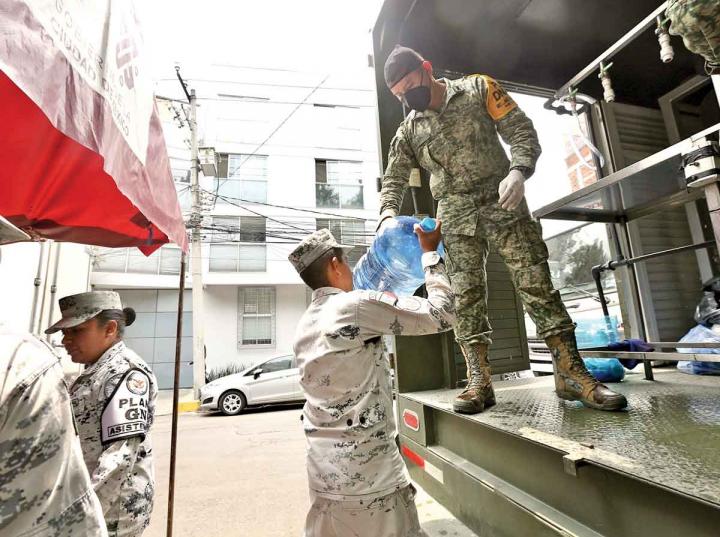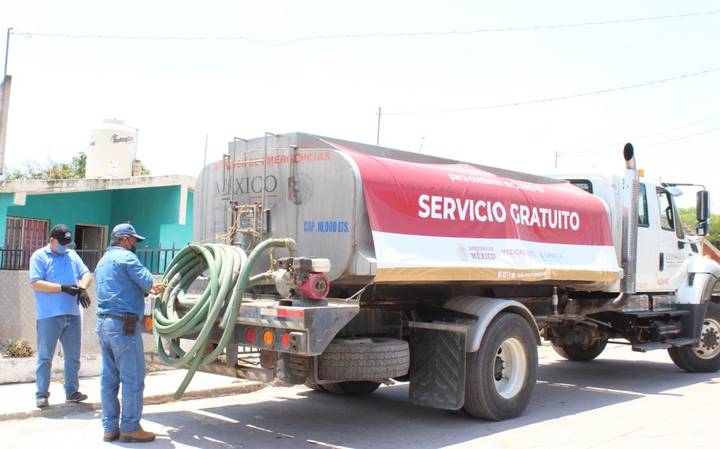Great Lakes States Take Halting Steps Toward Water Protections
18 diciembre 2015It is a step of last resort expressing an utter lack of confidence in the state government’s ability and desire to protect its waterways.
The past two decades have seen the dismantling of the Wisconsin Department of Natural Resources, the state agency in charge of issuing and enforcing clean water regulations, according to Kim Wright, executive director of Midwest Environmental Advocates. Theagency’s workforce has declined 18 percent since 1995. Last summer Republican Governor Scott Walker abolished the agency’s water division and its Bureau of Science Services while eliminating 18 staff positions.
“What we are facing now is a series of challenges that has to deal not just with funding, but with resolve and creating an idea about the future of what the Great Lakes can be.”
–Joel Brammeier,
President and CEO
Alliance for the Great Lakes
Midwest Environmental Advocates, a Madison-based nonprofit law center, filed thepetition for corrective action on behalf of the 16 individual citizens. The budget and staff cuts, and other changes, seriously harmed the agency’s ability to protect water, according to the petition, which also references a 2011 letter from the EPA that outlined problems within the state’s Clean Water Act programs.
Wisconsin is not the only state in the Great Lakes region struggling to come to terms with an array of emerging and persistent water problems. Toxic algal blooms in western Lake Erieshut down water supplies for half a million people in Toledo, Ohio, last year, and reached their highest intensity on record this year. Blooms of the same algae fouled more than 600 miles of the Ohio River in September. In response to lead-contaminated drinking water in Flint, Michigan, the EPA announced last week that it will audit the state’s drinking water program to “ensure that MDEQ maintains reliable drinking water supplies that meet all of the requirements of the Safe Drinking Water Act”. Invasive Asian Carp in Illinois and nitrate pollution in Minnesota also pose risks to human, environmental, and economic health.
The Great Lakes states have an admirable track record when it comes to banding together to protect their water resources. They reined in phosphorus pollution from factories and wastewater treatment plants with the 1987 Great Lakes Quality Agreement and ensured water would not be diverted outside the basin with the 2008 Great Lakes Compact. The states have also been ardent supporters of the federal Great Lakes Restoration Initiative, which has so far poured more than $US 1.6 billion into the region and cleaned up six contaminated sites listed as areas of concern.
But the Wisconsin petition, the EPA’s action in Michigan, and the burgeoning algal blooms in Lake Erie raise questions about whether the Great Lakes states have the will and ability to tackle the complex and politically sensitive drivers of the region’s current water problems. It is a question with potential implications for national water protections; the region is home to one presidential candidate — Ohio Republican Governor John Kasich – and a second candidate who dropped out of the race in September — Wisconsin Republican Governor Scott Walker. Wisconsin Republican Representative Paul Ryan became Speaker of the House in October.
“What we are facing now is a series of challenges that has to deal not just with funding, but with resolve and creating an idea about the future of what the Great Lakes can be, and what we as the people who live here want it to be,” Joel Brammeier, president and CEO of the Chicago-based Alliance for the Great Lakes, told Circle of Blue. “These challenges that are cropping up like algae blooms, or the fact that we are at the center of a North American oil transportation network, or what does it mean for us to be sitting on top of 20 percent of the world’s fresh water when environments and economies across North America are being challenged by drought — those questions are not going to be dealt with by spending money.
“Those are the sort of systemic, cultural challenges we’re going to have to confront as a region if we want to cross the threshold into the next era of having the Great Lakes as the centerpiece of our quality of life and our advantage over other areas of the country.”
“In the Great Lakes region, many people—politicians, business owners, environmentalists, and people who wouldn’t fit into any of those categories but just enjoy being out on the water — love to reflect on how awesome and substantial and unique this resource is,” Brammeier added. “But when push comes to shove, does the way we support ourselves, build our economy, and drive the future of our region actually reflect the priority that we all talk about and put on clean water? It’s a very interesting test for the region.”
States Respond to High-Profile Crises
When Toledo lost its drinking water for nearly three days last year, toxic algae blooms caused by excess amounts of phosphorus in Lake Erie became a problem that could no longer be ignored. Ohio immediately began taking steps to mobilize funding to allow cities to test for algal toxins and improve their wastewater treatment systems, and federal lawmakers from the state worked to fund projects aimed at reducing phosphorus runoff from farmland. Seven months after the crisis, more than $US 188 million in state and federal funds had been directed to address the problem. Most significantly, the state passed a law in April regulating farmers in the western Lake Erie basin.
–Madeline Fleisher,
Staff Attorney
Environmental Law and Policy Center
“Regarding the algae issues, specifically in Lake Erie, Ohio has done more than other states in enacting some new laws, specifically the Clean Lake Erie Act that placed restrictions on when farmers can apply fertilizer and manure,” Adam Rissien, director of agricultural and water policy at the Ohio Environmental Council, said in an interview with Circle of Blue. “There are some weaknesses with that in that they have some special exemptions, but generally it shows a willingness to put some rules into place and some regulation. We have to give recognition to that effort.”
Governor Kasich also joined Michigan Governor Rick Snyder and Ontario Premier Kathleen Wynne this June in signing a binational commitment to cut the amount of phosphoruspollution flowing into western Lake Erie by 40 percent over the next 10 years. And the state iscurrently involved in a lawsuit to force the U.S. Army Corps of Engineers to pay for placing sediment dredged from the Cuyahoga River—which the state contends is polluted—in a disposal facility instead of in Lake Erie to safeguard water quality. Nonetheless, a fundamental shift in the state’s water protections has not materialized.
“The Toledo algae bloom, I wouldn’t call it a game-changer quite, but it did shift momentum—in large part, and perhaps most importantly, by getting some of the agricultural folks to really recognize that they couldn’t just keep on doing what they were doing” Madeline Fleisher, a staff attorney in the Columbus, Ohio, office of the Environmental Law and Policy Center, told Circle of Blue. “There’s always been efforts on their part, but they’ve been quite resistant to any sort of mandatory requirements. Slowly that is starting to give way. It needs to happen faster if we’re going to avoid a repeat of last summer.”
The regulations on fertilizer and manure applications, for example, only apply in the western Lake Erie basin, despite four other state drinking water sources outside of the basin beinglisted as impaired by algal toxins. Large livestock farms that are too small to need permits, but large enough to have a cumulative effect on the water quality of nearby streams and lakes, are also an outstanding source of pollution that the state has yet to address, Rissien said. Those changes could take time.
“We don’t change how agriculture does business by the stroke of a pen in the wake of a crisis,” said the Alliance for the Great Lakes’ Brammeier. “We change it by recognizing that agriculture is a big part of the Great Lakes economy, and big parts of the Great Lakes economy have to deliver clean water. That’s a conversation of years, not of crises.”
Federal Government, Public Need to Play Role
States have little example to follow when it comes to regulating agriculture and other sources of nonpoint pollution, a term that refers to any fertilizer, sediment, chemical, or other polluting substance that washes off of land as opposed to out of a factory, power plant, or water treatment facility. Nonpoint source pollution was deliberately exempt from much of the federal Clean Water Act, and the federal government has done little but encourage states to implement best management practices to reduce it.
“The states often do what they are required to do or pressured to do, and they have not been required or pressured to address nonpoint source pollution until now thanks to both the legal pressure of the impaired water listings and TMDL [total maximum daily load] process and the public pressure from the algae blooms,” Noah Hall, an associate professor of law at Wayne State University specializing in environmental and water law, told Circle of Blue. “When states are required or pressured to do something, they can step up and do it. Great Lakes issues in particular have often required federal and international leadership as much as state leadership.”
“When states are required or pressured to do something, they can step up and do it. Great Lakes issues in particular have often required federal and international leadership as much as state leadership.”
–Noah Hall,
Associate Professor of Law
Wayne State University Law School
For example, a coalition of Great Lakes environmental groups called on the federal EPA in October to list the western basin of Lake Erie as impaired, a distinction that would trigger requirements under the Clean Water Act for a “pollution diet” for the watersheds flowing into the lake. Involving the federal government could also help enforce the commitment signed by Michigan, Ohio, and Ontario to reduce phosphorus pollution in the lake, according to Hall.
“Maybe instead of just asking the states to live up to that commitment, now is the time for the federal government to take the state’s commitment and turn it into a binding regulatory standard moving forward at both the international and interstate levels,” Hall said. “In other words, I would take that aspirational agreement that Michigan and Ohio did as a directive as much to the EPA as to the states themselves.”
Leadership on water issues has often shifted between the state and federal level, Hall said. A prime example is the Wisconsin DNR, long considered a national leader in water management and protection in large part due to the independence of its secretary, who for 70 years was appointed by a citizen board, according to Midwest Environmental Advocates’ Wright. The state changed the position back to a gubernatorial appointment in 1995.
“I’ve worked in or with the DNR for 30 years,” Wright told Circle of Blue. “It’s been this leader, and we have a great university system, but the DNR had a really important functional role.
“There was hard science and working with scientists within the university system, but also the practical application of science and balancing that with citizens fully at the table. There were years and years of data sets and targeted science. That that can just be stripped away and disemboweled, basically, I’m so offended by that as a citizen and a person who has worked in natural resources. That’s an immeasurable value that can’t be replaced.”
Ten years of frustrating legal challenges over water pollution permits issued by the hobbled agency prompted the 16 citizens named in the petition to take action, Wright said.
“We shouldn’t have to hire engineers and engage lawyers to have a legally sufficient permit issued in the state of Wisconsin, and that’s what it’s come to,” she said. “We can’t replace the importance of our state agency in protecting our water.”
“We can’t replace the importance of our state agency in protecting our water.”
–Kim Wright,
Executive Director
Midwest Environmental Advocates
The Wisconsin DNR did not respond to requests for comment. In a press releasedated October 28, the agency said proposed rule revisions to the state Pollutant Discharge Elimination System permit program would address 21 of the 75 concerns raised by the U.S. EPA in 2011. It said the agency has resolved another 36 of the concerns “through rulemaking or other means” and is addressing the remaining 18 concerns through two other rule packages.
“Wisconsin takes its responsibilities to implement the Clean Water Act very seriously,” DNR Secretary Cathy Stepp said in the release. “Our state has historically been, and continues to be, a leader in many water-related areas.”
While the federal government may be able to nudge states toward stricter water protections through regulation, the public is also an important player in encouraging action at the state level, according to Wright. Communities concerned about water need to speak up, she said.
“A good, normal, reasonable person just assumes that their government is protecting their water and they don’t see a role for themselves, because that’s something that is done for them,” Wright said. “We need to make sure this is not a political issue, not a partisan issue. This is our water. We are relying on a network of advocates all over the state to help keep spreading the word and having conversations and dialogue. A big part of that is getting people to understand that their government has a really important role in protecting public health through regulating water.”
“It’s hard to get on the bandwagon,” she added. “Left, right, everyone doesn’t like government. But I want an engineer determining what is coming out of my tap, not a politician.”
24 de noviembre del 2015
Fuente: Circle of blue
By Codi Kozacek
Artículos relacionados
Otras Publicaciones
 Internacionales
Internacionales
Mundo – BC dejará de recibir 493 millones de m3 de agua de EU (La Jornada)
25 abril 2024 Nacional
Nacional







